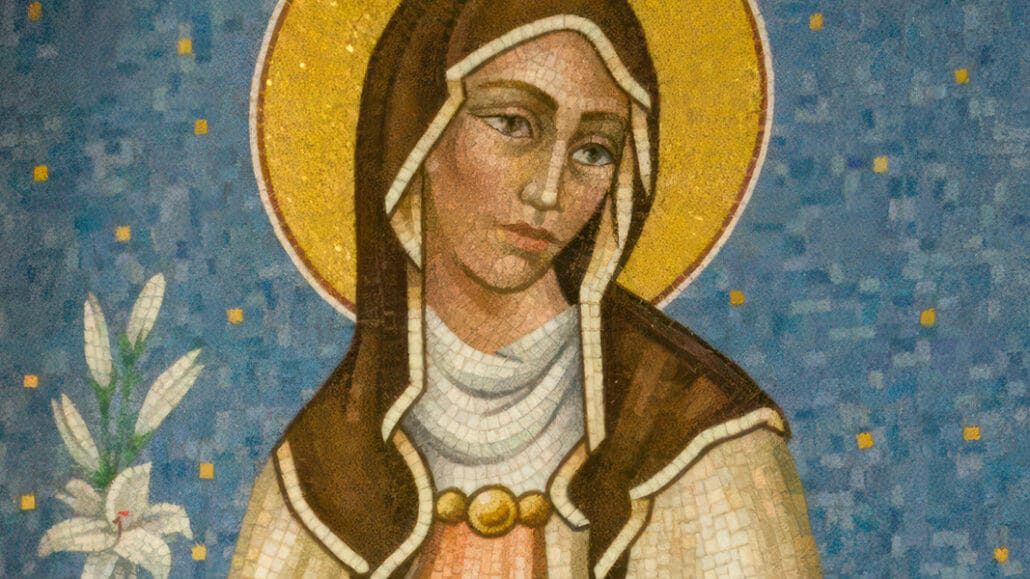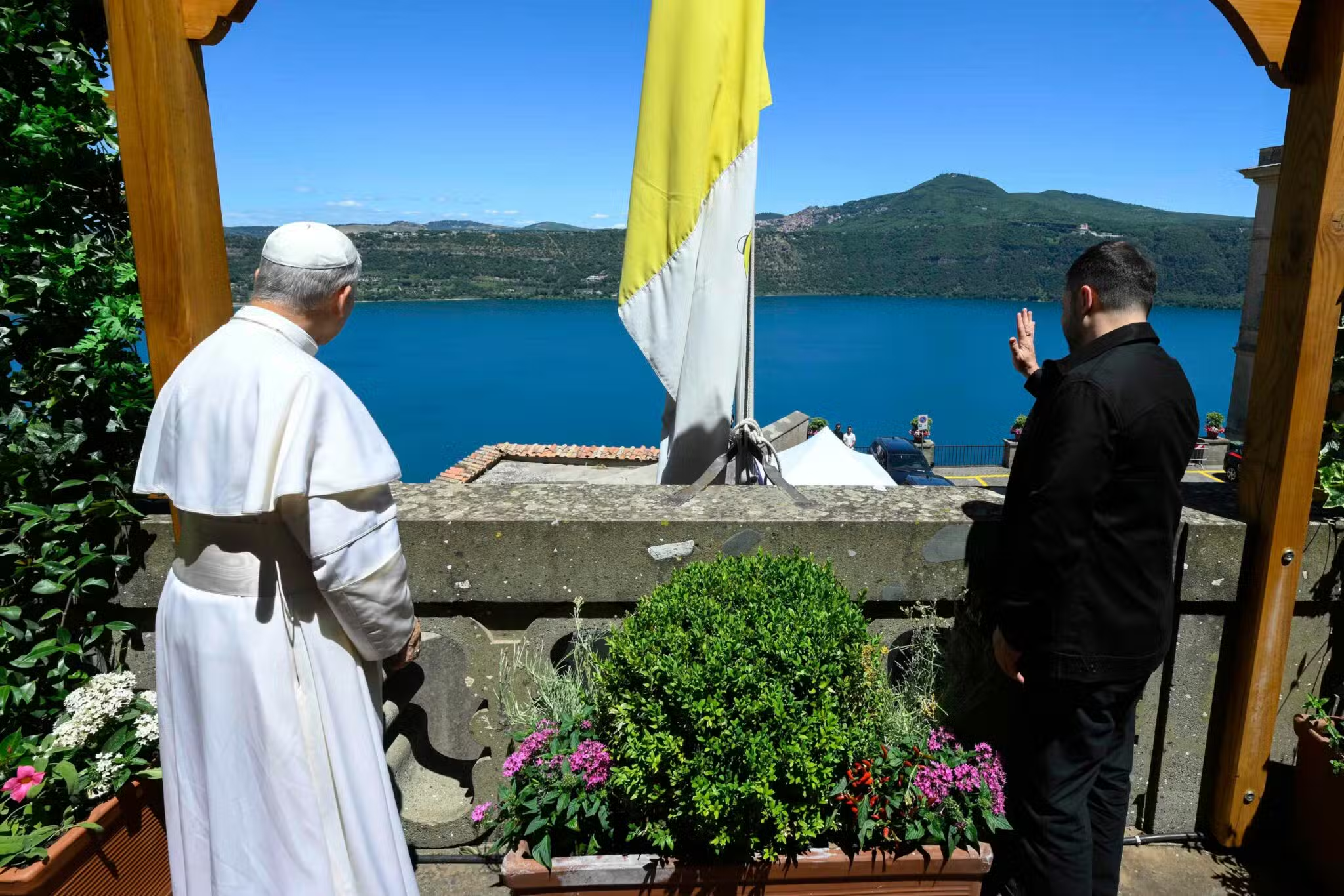Clare of Assisi did not follow a traditional path to religious life. She was deeply influenced by the preaching and example of St. Francis and the Lesser Brothers and by the poverty and humility of their lives as they imitated Christ in the Gospels. Clare’s understanding of her vocation was rooted in a life of great intimacy with Christ and a commitment to complete and unmitigated poverty.
When she left her home to become a follower of the Gospel life as lived by Francis and his companions, she used his model with the women who joined her after they were settled in the convent at San Damiano.
St. Clare has the distinction of being the first woman in history to write a Rule of Life for religious women at a time when convents for women followed strictly prescribed forms of enclosure and demanded individual dowry provisions for continued sustenance of each monastery. In writing her own Rule, Clare was breaking new ground in the Church by holding to her belief that she was called by God to this very demanding expression of Gospel life.
Regis Armstrong writes in Clare of Assisi: Early Documents that she had “a startling sense of individual freedom that was based on [her] experience of the maturity of her sisters.” Clare’s insistence on papal approval to protect her Form of Life—including the “Privilege of Poverty”—not just as a privilege but as a right forged a new understanding of religious vocation in the life of the Church.
Clare was often very ill, confined to bed, weakened no doubt by severe fasting and other austere practices, but she clung tenaciously to her vision. When Pope Innocent IV realized her death was imminent, the Form of Life was delivered to her on August 11, 1253, carrying his signature and the papal seal one day before her death.
Two years after her death, on September 26, 1255, Clare was solemnly declared a saint by Pope Alexander IV, her friend and confidant. Five years later the church of San Giorgio became part of the Basilica of St. Clare in Assisi where her body remains. Prior to 1264, Clare’s followers were called the Poor Sisters. In 1264, however, when Pope Urban IV imposed his new Rule on monasteries of women throughout Europe, including the monastery of San Damiano, they became known as the Poor Clares.
The Basilica of St. Clare, overlooking the beautiful valley below Assisi, was built on the site of the former Church of St. George. It was the first burial place of St. Francis and the site of his canonization, and it became the burial place of Clare. An extremely simple building easily recognized by the horizontal layers of pink and white stone extracted from the quarry of Mount Subasio, it has massive flying buttresses on either side while the interior is far less decorated with famous frescoes than is the Basilica of St. Francis.
The body of St. Clare is buried in a crypt below the basilica. A museum also displays thirteenth-century relics and artifacts, including the patched habit of St. Francis. The original Cross of San Damiano, dating from about 1100, hangs in a small side chapel in the basilica, in part of what once was the church of San Giorgio.
Thousands of pilgrims come annually to pray before the image of Christ who spoke to Francis in the Church of San Damiano, saying: “Francis, don’t you see that my house is being destroyed? Go, then, and rebuild it for me.”
Today, replicas of the Cross of San Damiano are venerated in most Franciscan friaries, churches, and convents throughout the world and in the homes of Secular Franciscans as well.
St. Clare: Pray for us!








